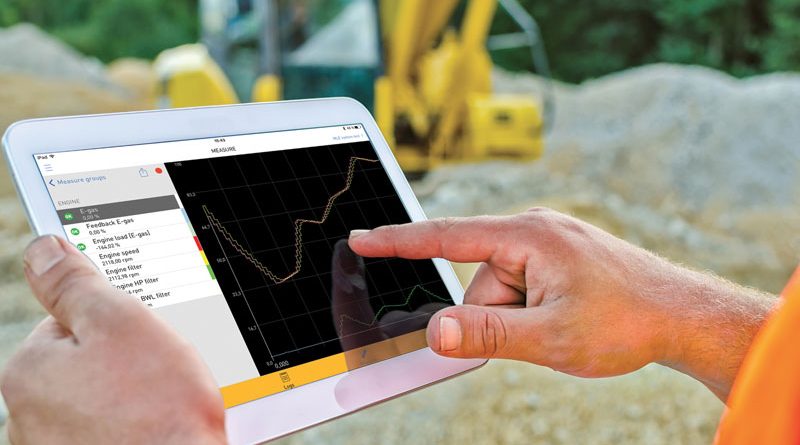IoT Benefits in the Covid Era
The lockdowns and the related restrictions due to the pandemic may make it difficult or impossible to reach the workplaces. Therefore, the remote access to monitor machinery is even more useful. Parker explains the benefits
Industrial IoT is nothing new: manufacturers have been remotely connecting to PLCs for many years. But as Parker explains, the trend for diagnostics and increased machine intelligence has come into sharper focus this year – with Covid-19 highlighting a clear need for enhanced connectivity. The impact of lockdown (and the related tier system) has made site access a logistical challenge for many businesses. Consider, for example, the problems with industrial machinery that can’t be resolved on-site. With the right equipment installed, remote access to monitor and update machinery can safeguard uptime, and help swiftly resolve any technical problems. As machine builders and suppliers face pressure to control and maintain many different systems and devices, smart components – products with built-in diagnostics and communications interfaces – are gaining popularity. These allow real-time key machine data such as temperature, pressure/torque, flow, current and voltage, to be quickly and securely transmitted and analysed whenever defined performance parameters are not met. In the past, a clogged filter could cause downtime and require on-site intervention; today, the filter element can trigger an alert that it needs to be changed, allowing operations to be maintained. In some cases, using smart components removes the need for controllers to monitor systems.

Smartphones and the IoT gateway solutions are also used
Although open-source Industrial Ethernet remains a popular choice for many manufacturers, mainstream communication devices are also getting in on the act. For example, smartphones or other Bluetooth-compatible devices can be paired with a controller – such as Parker’s IQAN Connect system – to provide remote asset monitoring, data collection, system updates and trend reporting from the factory floor (or remote outpost), to anywhere in the world. App-based systems allow connection and safe upload/download of programs remotely.
Another example are the IoT gateway solutions, that can be administered without the need for anyone on-site. In some cases, customers may need remote monitoring that does not go to a central PLC; a gateway allows independent access through a phone or Wi-Fi network. If equipment is switched on, engineers can log in and connect to hardware, ensuring business as usual. Alongside PLCs in the factory, you can fit sensors onto key parts of the system and then remotely control what’s going on with them without touching the control element. This isolated option is particularly useful for companies who are averse to remote connections with integrated systems – as there’s no need to navigate firewalls.
Parker has developed a service that connects factory-based engineers with specialist field support, using a simple Bluetooth device and smartphone connection.

It’s easier to analyse customer needs and improve strategic decisions
Although the need to connect remotely has never been clearer, sometimes companies may have concerns about what an IoT solution can realistically achieve. When Parker’s specialists discuss IoT options with customers, a key starting point is to assess business requirements and objectives in detail. For example: does the business need to text engineers if there’s a problem? what level of alerts are needed? do engineers want to generate reports or analyse trends? how does the workplace communicate? Sometimes the primary objective is simple – such as connecting to equipment remotely if it breaks down. In the past, you’d have to get someone on-site, or get an expert with a manual on the phone; now it’s straightforward to directly connect, look at a system and see what’s happening. That’s helpful for data analysis, fault management and risk diagnosis. But other businesses may need more sophisticated tools; perhaps they want to analyse machine energy use or predict component failure. Even with a traditional industrial system, trend analysis can be labour intensive, often with customers logging faults on spreadsheets. IoT makes it easier than ever to monitor what’s going on, analyse customer needs and improve strategic decisions – you can get a picture of what’s happening in the whole machine.

The system security issue
System security can be an initial concern for some people. Parker will ensure that key safeguards are put in place. That means approvals around data use and sharing, signed agreements on what is being delivered and industry-leading secure software. When exploring options, it’s worth checking if shortlisted systems offer two-way Over-the-Air (OTA) communication with remote assets. While Parker’s system can send and monitor information, modify programmes and receive data, this functionality is not common to all solutions in the market. Network availability can also be a critical factor for companies working in remote locations. Some suppliers offer access to SIM card solutions and data packages, with options to tailor contact and alert activity based on business priorities. This approach ensures that the customer can remotely connect via SIM or Wi-Fi networks, rather than being restricted.

Field-based data capture benefits
As an OEM-owned tool, IoT can be used to capture data from the field for further machine development. That is a game changer, compared with a few years ago when you could have only got this from an R&D lab. As a result, development targets should shorten. For example, Parker recently worked with a company that is taking IoT into the field. The customer does not currently have a full telematics system, and needs to better understand how long it could operate a remote machine correctly. Traditionally you’d need to employ someone remotely on-site, with lots of sensors connected, but with IoT there is scope to develop methods of doing this 24/7. As manufacturing personnel are increasingly reliant on real-time operating systems to enhance productivity and quality control, wider technological choice and ‘anytime, anywhere’ services offer scope to save time, emissions, and significant cost savings. And the smartphone could be key to unlocking this potential.

